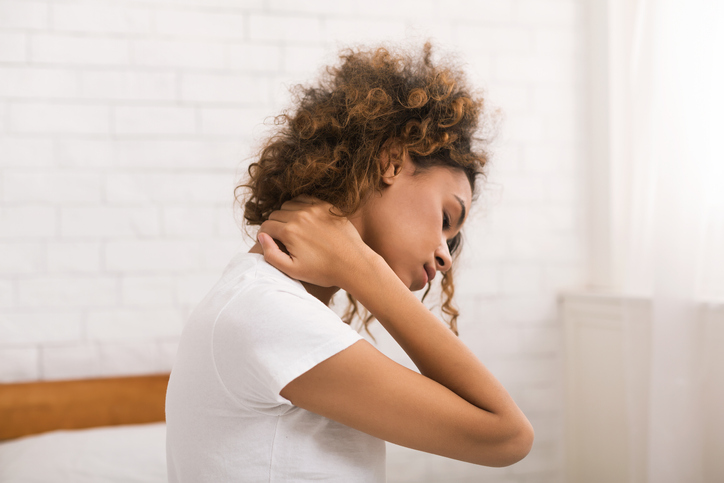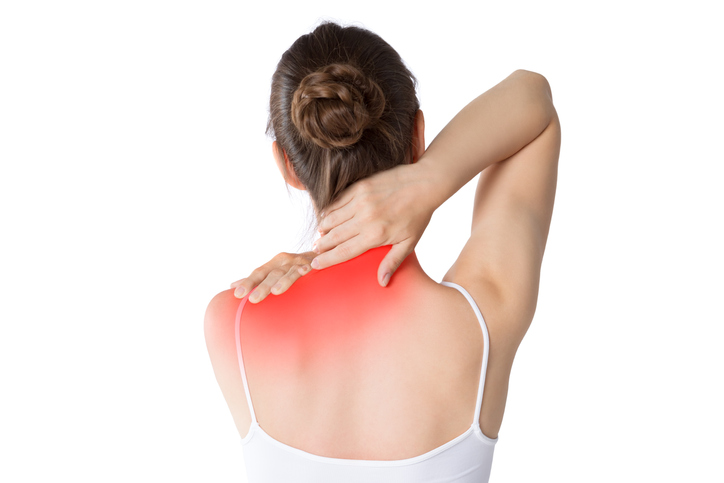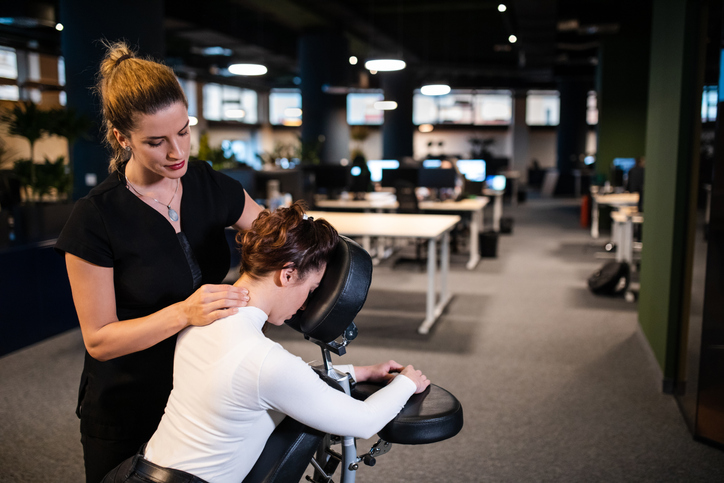Pain
Common Causes of Neck Pain

Approximately 7 out of 10 people will experience neck pain (cervicalgia) at some point in their lives. Neck pain ranges from mild to severe and can be acute (lasting days to weeks) or chronic (lasting longer than three months). The causes of neck pain are varied and diverse. Some common causes of neck pain include the following:
Muscle strain
Muscle strain is the most common cause of neck pain. A neck muscle strain occurs when a muscle in the neck is stretched too far and tears. This can happen due to poor posture, improper support of the neck (e.g., awkward positioning of the neck during sleep), or repetitive motions that put stress on the neck muscles (e.g., physically demanding work that involves overhead lifting). Fortunately, most muscle strains are acute and very treatable; they typically heal within days to weeks and can be treated with temperature therapy, pain medications, and stretching exercises.
Proper posture and sleep position can help prevent muscle strains in the neck. Poor posture creates tension in the shoulder and neck areas. When the head leans forward, pressure is placed on the shoulders, neck, and upper back. Leaning the head back several times throughout the day helps to stretch the muscles, reducing tension in the shoulders and neck. During sleep, the head and neck should be kept in a neutral position aligned with the chest and back. Sleeping on the stomach with the head turned to one side should be avoided.
Trauma/injury
Neck pain can be caused by trauma or injury to the neck muscles, tendons, ligaments, joints, nerves, or intervertebral discs. Sudden, forceful back-and-forth movement of the neck, known as whiplash, strains the soft tissues in the neck. Whiplash injury most commonly occurs during rear-end vehicle collisions, but it can also occur during other events, such as contact sports, physical abuse, falls, etc.
Mental stress
Stress can increase muscle tension, especially in the neck and shoulders. When stress is chronic, muscles are often in a constant state of tension, which causes neck pain and stiffness.
Herniated disc
Spinal discs have a soft center that is encased in a tougher, rubbery exterior. A herniated disc occurs when the soft center pushes through a tear in the rubbery exterior. A herniated disc can put pressure on the spine and spinal nerves, causing pain.
Degenerative disc disease
Nearly every individual over the age of 60 has some form of disc degeneration; it develops from normal wear and tear on the spinal discs that occurs with aging. Intervertebral discs are mainly composed of water, and as a person ages, the discs dry out, lose their flexibility, elasticity, and the ability to absorb shock. When this causes pain, it is referred to as degenerative disc disease. It most commonly affects the neck (cervical spine) or the lower back (lumbar spine), as these areas of the spine are the most vulnerable to wear and tear.
Cervical radiculopathy (pinched nerve)
Also known as a pinched nerve in the neck, cervical radiculopathy occurs when a nerve root in a cervical vertebra is inflamed or damaged. It typically develops from a herniated disc or disc degeneration involving compression of a nerve. Symptoms include neck pain, tingling, or numbness that may radiate to the shoulder, arm, and fingers; altered reflexes; and weakness.
Cervical osteoarthritis
Cervical osteoarthritis, or cervical spondylosis, is an umbrella term that refers to age-related changes to the bones, discs, and joints of the neck. It involves the gradual breakdown of cartilage in one or more joints. When the protective cushioning of cartilage deteriorates, the bones in the joint eventually rub together, causing inflammation and pain.
Spinal stenosis
Spinal stenosis is a narrowing of the spinal canal. It occurs when the bony openings within the spine (foramina) narrow, placing pressure on the nerves traveling throughout the spine. This reduced nerve space can occur within the spinal cord or where the spinal nerves exit the spinal canal. In addition to pain, spinal stenosis can cause tingling, muscle weakness, and numbness in the extremities.


















